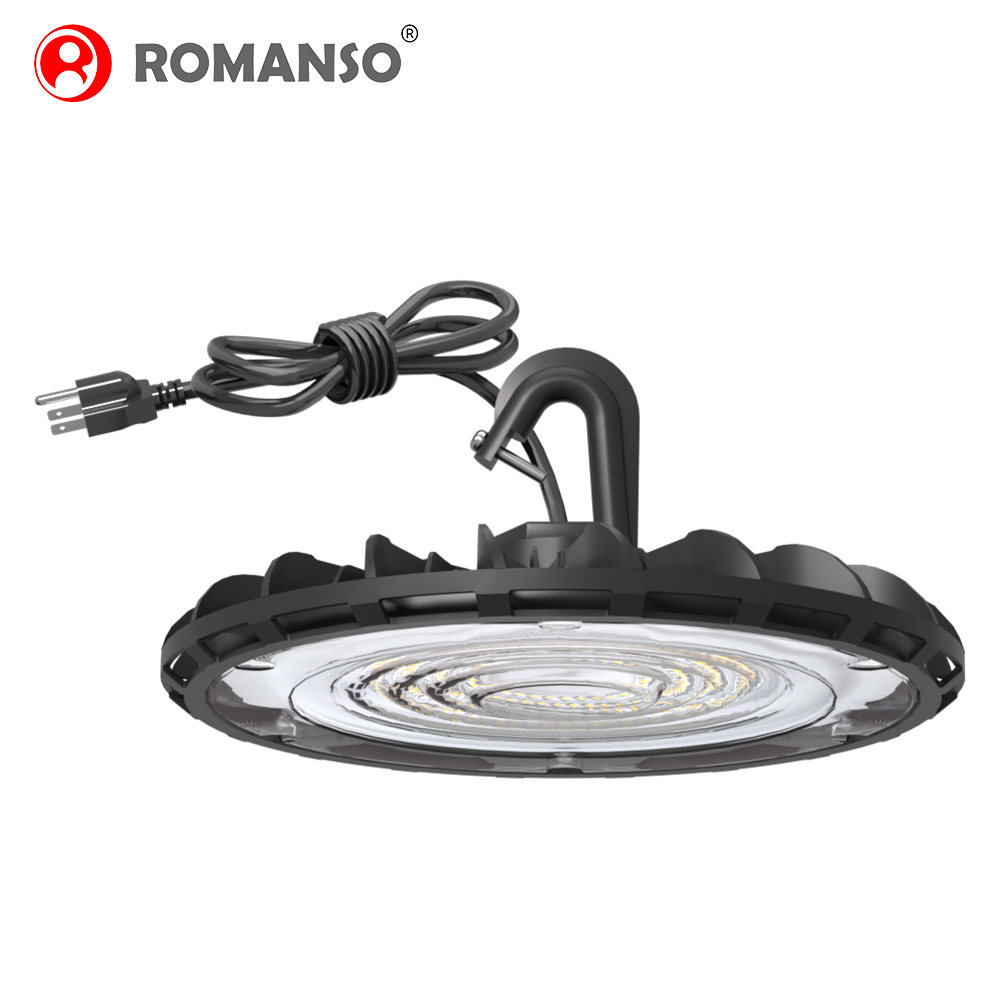Key Benefits of Upgrading to LED Industrial Lighting Solutions
2025
Significant Energy Efficiency and Cost Savings
How LED Industrial Lighting Reduces Energy Consumption by Up to 80%
LED industrial lighting is revolutionizing the way businesses manage energy consumption. These advanced lighting systems can slash energy use by up to 80% compared to traditional lighting like HID or fluorescent systems. This remarkable efficiency stems from improvements in semiconductor technology, which enhances the conversion of electricity into visible light, reducing wasted energy. Lower energy use translates not just into savings on electricity bills but also lessens the strain on local power grids, aligning with global green initiatives.
Moreover, the financial advantages of switching to LED systems are substantial. Studies have shown that companies embracing LED lighting experience significant reductions in energy expenses, often achieving a payback period of merely 1-2 years. This quick turnaround in investment reinforces the value of LEDs as a cost-effective choice for industrial applications. By reducing energy use, organizations contribute positively to sustainability while also enjoying operational cost savings.
Long-Term Operational Cost Reduction Compared to Traditional Lighting
The benefits of LED lighting extend beyond electricity savings, impacting overall operational costs significantly. While traditional lighting systems require frequent maintenance and replacements, LEDs are designed to last over 50,000 hours, much longer than the 15,000 hours typical of fluorescent bulbs. This longevity leads to substantial savings on maintenance and replacement expenses, allowing companies to reallocate resources more effectively.
Research highlights an impressive return on investment (ROI) with LED lighting, reaching up to 400% over its lifespan. This is due in part to considerably lower maintenance needs and fewer lamp replacements, which can save thousands of dollars in operational costs. Investing in LED lighting is thus not just a prudent choice for current energy efficiency but a strategic decision that ensures long-term financial savings.
Case Studies: Industrial Facilities Slashing Electricity Bills with LED Upgrades
Real-world examples demonstrate the dramatic impact of LED lighting on industrial electricity expenses. Numerous facilities have reported impressive decreases in their electricity bills following LED upgrades. For instance, a large manufacturing plant experienced a 60% drop in its monthly energy costs, showcasing the tangible benefits of switching to LED systems.
Further case studies reveal that industries such as warehousing and retail have leveraged the savings from LED lighting to finance complete lighting upgrades. The Department of Energy's analysis confirms these trends, asserting that LED upgrades result in measurable energy savings across various facility operations. These success stories highlight the practical benefits and encourage more businesses to embrace LED solutions for optimal cost efficiency and sustainability.
Extended Lifespan and Reduced Maintenance
50,000+ hour lifespan: Why LEDs outperform HID/fluorescent systems
LEDs significantly outperform traditional HID and fluorescent systems, boasting an average lifespan of over 50,000 hours. This extended lifespan is crucial because HID and fluorescent lights often require frequent replacements due to shorter lifespans. This longevity equates to fewer replacements and associated costs, making LEDs a more reliable choice for industrial settings where downtime can be extremely costly. Recent studies indicate that industries adopting LED technology have reduced their lighting replacement frequency by 80%, showcasing a clear advantage in maintenance reduction and operational efficiency.
Minimizing production downtime through fewer bulb replacements
Minimizing production downtime is a crucial concern for industrial operations, and LEDs play a significant role in achieving this goal. Unexpected bulb failures in traditional lighting can lead to production halts, but the durability of LEDs results in decreased downtime. Facilities that implement LED systems report up to a 75% reduction in operational disruptions caused by lighting failures. Additionally, this reliability allows maintenance personnel to focus on more critical tasks instead of routine bulb replacements, which directly enhances overall productivity.
Labor cost reductions in maintenance-intensive industrial environments
LED lights require less frequent maintenance, directly correlating to significant labor cost reductions. This efficiency allows personnel to allocate their time to other projects, promoting a more productive working environment. Industries switching to LED lighting have reported annual labor savings of up to 30% due to the decrease in maintenance demands. A survey from facilities management experts confirms that these shifts to LED lighting significantly lower overall labor costs associated with lighting upkeep, offering a compelling reason for adoption in maintenance-intensive environments.
Enhanced Workplace Safety and Visibility
Superior color rendering (80+ CRI) for hazard identification
LED industrial lighting is a game-changer when it comes to workplace safety due to its superior Color Rendering Index (CRI) of 80 or higher. This high CRI ensures accurate color representation, aiding in the swift identification of hazards, such as safety labels, warning signs, and color-coded indicators. For instance, environments that have switched to high-CRI LED lighting have reported a noticeable decrease in workplace accidents, as these lights allow workers to discern colors with greater precision. By facilitating better visibility, LEDs help create a safer industrial environment where risks are minimized.
Reducing slip/fall accidents through uniform illumination
One of the standout benefits of LED industrial lighting is its ability to provide uniform illumination across a workspace. This consistent brightness eliminates shadows and dark spots that could contribute to slip and fall incidents. According to post-installation safety audits, such uniform illumination can decrease these incidents by up to 40%. Additionally, employers often notice a culture of safety improvement when they upgrade to LEDs, as the enhanced visibility not only contributes to a safer environment but also boosts employee confidence and awareness.
Eliminating dark spots in warehouses and manufacturing floors
Dark spots in industrial settings pose significant risks by concealing potential hazards. Upgrading to LED lighting strategically addresses this issue by offering better and more uniform lighting distribution across large areas. LEDs provide precise control over lighting direction, allowing facilities to eliminate shadows and ensure comprehensive illumination. Surveys conducted in such upgraded facilities reveal improved employee confidence and morale, thanks to the superior visibility provided by LEDs. This enhanced lighting condition not only prevents accidents but also enhances the overall working environment.
Eco-Friendly Lighting Solutions
Carbon footprint reduction through efficient energy use
Utilizing LED industrial lighting leads to significant reductions in carbon footprints by cutting overall energy consumption. Studies indicate that LED lighting systems can reduce carbon emissions by up to 40%. With the growing concerns about climate change, industries are increasingly gravitating towards energy-efficient solutions to meet sustainability goals. Furthermore, many governments offer incentives to businesses that implement greener technologies, such as LED lighting, underscoring the importance of energy efficiency in today's environmental landscape.
Mercury-free design vs traditional industrial lighting
Unlike traditional fluorescent lights, LED industrial lighting boasts a mercury-free design, contributing to safer recycling and disposal processes. This aspect helps industries comply with environmental regulations and improves their sustainability profile. By transitioning to mercury-free lighting solutions, companies actively contribute to environmental conservation efforts. Studies have consistently highlighted the positive impact this shift has on global sustainability initiatives.
Recycling advantages and sustainability certifications
LED lighting systems come with inherent recycling advantages due to their modular design, which simplifies the recycling process. Many components in LED systems are recyclable, thus reducing overall waste. Moreover, implementing LED solutions can help companies achieve green certifications like Energy Star or LEED, demonstrating their commitment to sustainability. Numerous organizations have reported benefits in public relations and increased customer loyalty after switching to environmentally friendly lighting solutions, showcasing the importance of LED adoption in modern business practices.

Smart Controls and Operational Flexibility
IoT Integration for Adaptive Lighting in Industrial Settings
Integrating IoT with LED industrial lighting brings unprecedented operational efficiency through adaptive lighting. IoT-enabled LED systems can effortlessly adjust lighting in real-time based on environmental conditions, occupancy, and natural light availability. This adaptability can bolster energy savings, with some companies reporting reductions by as much as 30%. Beyond energy efficiency, IoT technology facilitates data collection that can be analyzed to improve operations over time. This data-driven approach allows businesses to further enhance their lighting strategies, aligning with sustainability goals and reducing carbon footprints.
Motion Sensors and Daylight Harvesting in Manufacturing Facilities
Motion sensors and daylight harvesting are pivotal in enhancing energy efficiency in manufacturing settings. Motion sensors automatically control lighting based on occupancy, minimizing energy wastage in rarely used areas. Meanwhile, daylight harvesting systems adjust indoor lighting in response to natural light levels, optimizing both energy savings and employee comfort. These technologies have proved highly effective, with reports indicating potential savings of up to 60% on lighting costs. By leveraging these innovations, businesses can significantly cut operational expenses while contributing to a more sustainable and worker-friendly environment.
Real-time Energy Monitoring Through Connected LED Systems
Connected LED systems offer real-time energy monitoring, providing valuable analytics on energy use that help businesses optimize lighting efficiency. This continuous monitoring enables facility managers to identify inefficiencies and adjust their strategies accordingly, which can lead to reduced energy costs by 20-50%. With comprehensive real-time data, companies can proactively manage their energy consumption, ensuring operational costs are kept at a minimum. This strategic approach not only improves the bottom line but also demonstrates a commitment to sustainability and efficient resource use.
FAQ
1. How much can businesses save by switching to LED industrial lighting?
Businesses can save up to 80% in energy costs compared to traditional lighting systems. Additionally, the expected payback period for investing in LED lighting is typically between 1-2 years.
2. How long do LED lights last compared to traditional lighting?
LED lights boast a lifespan of over 50,000 hours, significantly longer than the 15,000 hours typical of fluorescent bulbs, which results in fewer replacements and lower maintenance costs.
3. Can LED lights improve workplace safety?
Yes, LED lighting has a high Color Rendering Index (CRI) that improves color representation, aiding in hazard identification, and provides uniform illumination, reducing slip and fall incidents.
4. Are LED lights environmentally friendly?
LEDs significantly reduce carbon footprints by cutting energy consumption and are mercury-free, making them safer for recycling and aligning with environmental regulations.

 EN
EN
 AR
AR
 BG
BG
 HR
HR
 CS
CS
 DA
DA
 NL
NL
 FI
FI
 FR
FR
 DE
DE
 EL
EL
 HI
HI
 IT
IT
 JA
JA
 KO
KO
 NO
NO
 PL
PL
 PT
PT
 RO
RO
 RU
RU
 ES
ES
 SV
SV
 CA
CA
 TL
TL
 IW
IW
 ID
ID
 LV
LV
 LT
LT
 SK
SK
 SL
SL
 UK
UK
 ET
ET
 GL
GL
 HU
HU
 MT
MT
 TH
TH
 TR
TR
 FA
FA
 MS
MS
 GA
GA




